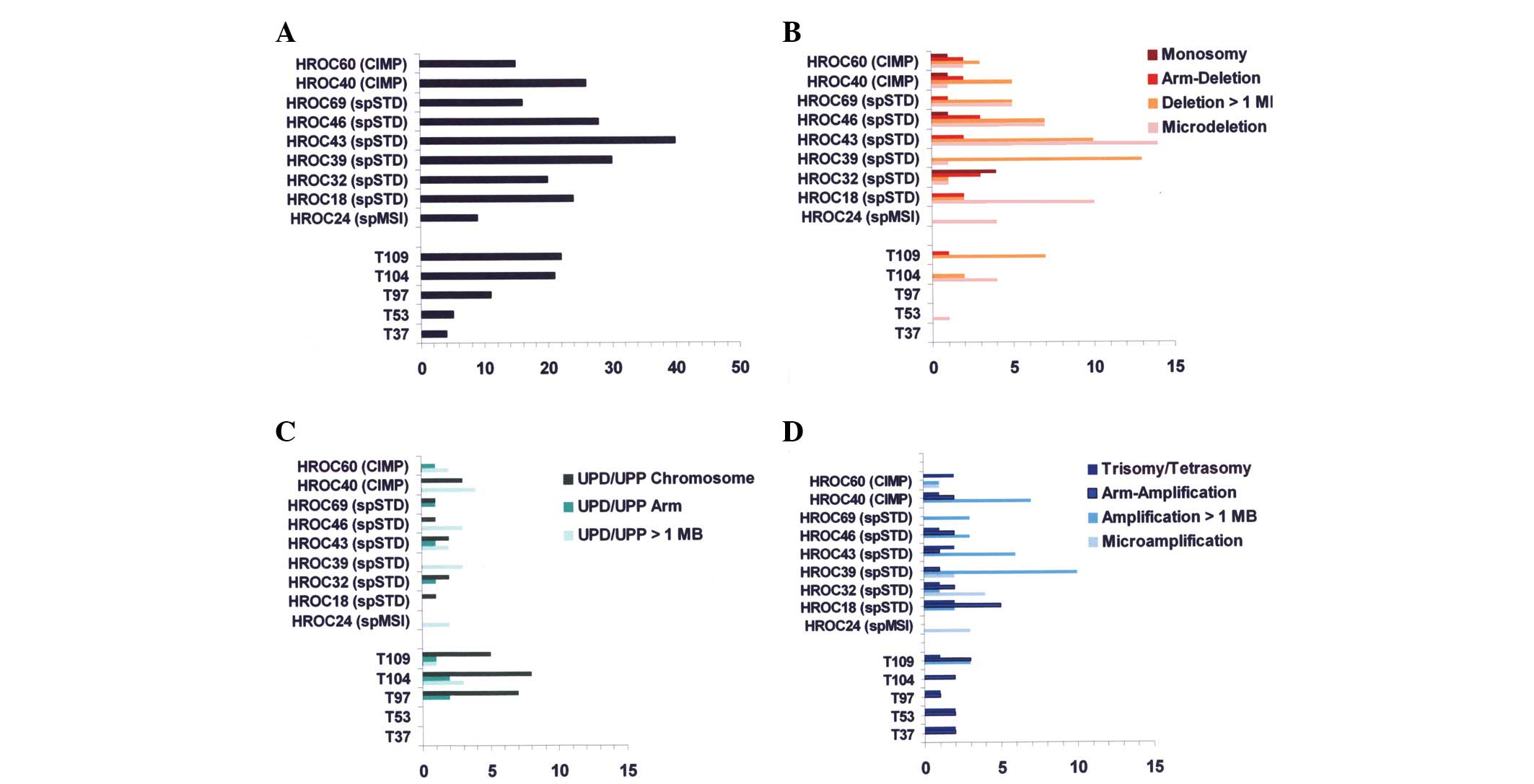Single nucleotide polymorphism array analysis of microsatellite-stable, diploid/near-diploid colorectal carcinomas without the CpG island methylator phenotype
- Authors:
- Published online on: October 30, 2012 https://doi.org/10.3892/ol.2012.1006
- Pages: 173-178
Metrics:
Total
Views: 0 (Spandidos Publications: | PMC Statistics:
)
Total PDF Downloads: 0 (Spandidos Publications: | PMC Statistics:
)
Abstract
Colorectal carcinomas are considered to progress by chromosomal instability (CIN), or microsatellite instability (MSI) and/or epigenetic gene silencing; however, in previous studies we observed a small fraction of tumours without this molecular phenotype. To further investigate these ‘X-type’ tumours, neoplastic glands from five tumours were isolated by laser-capture microdissection and used for single nucleotide polymorphism (SNP) array analyses. DNA from our own low-passage primary colorectal carcinoma cell lines (n=9) was used for comparison. Two of these ‘X-type’ tumours had very low numbers of aberrations (totals of four and five, respectively), consisting of trisomies and arm amplifications. Conversely, aberrations were markedly more frequent in the control cases and three of the ‘X-type’ tumours (range, 11‑40). These aberrations included deletions of chromosomes and chromosome arms, uniparental disomies (UPD), trisomies and arm amplifications. Recurrent microdeletions (<1 MB) were observed at 3p14.2 (FHIT), 16p13.2 (A2BP1) and 20p12.1 (MACROD2). Microsatellite analyses with polymorphic markers at five ‘canonical’ colorectal carcinoma loci demonstrated a complete loss of one allele in all but one case. When compared to the SNP arrays, concordant results were observed in 93% of tests; however, this was only if DNA from cell lines or laser-capture microdissections was used. In conclusion, colorectal carcinomas may develop without the classic molecular features of CIN, MSI and/or CpG island methylator phenotype (CIMP), but this is a rare event. UPD is frequent but does not define a separate molecular phenotype. Furthermore, our study supports the notion that SNP arrays are reliable for genome-wide detection of deletions and UPD, but discourages the use of microsatellite analyses to detect loss of heterozygosity with DNA from whole tissues.












